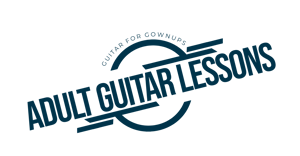If you’ve been playing guitar for a while, you already are familiar with barre chords.
The nice thing about barre chords is the fact that, once you know the fingering positions, you can simply slide that formation up and down the guitar neck to form different chords in various keys.
But did you know that there are some cool things you can do by “sliding” open guitar chords to various positions on the neck?
The difference is, while barre chords are movable and can be slid anywhere to form the same chord of a different name – open chords, when moved, often become an inversion or variation of another chord. And there are only certain positions where sliding an open chord will make sense “sonically”.
Let’s look at a prime example based on the open “D” chord.
Grab your guitar and play a standard open D chord at the 2nd fret position. It will look like this:
E——2——
B——3——
G——2——
D——0——
A————–
E————–
Now, maintain that same fingering position and slide the chord up to the position at the 5th fret like this:
E——5——
B——6——
G——5——
D——0——
A————–
E————–
Notice that you are still playing a D chord “formation”, only now at a higher fret position on the neck. Also note that you are still playing the open D note on the 4th string with this new chord.
From a technical standpoint, this new chord is an F/D (F “over” D), but for now, it’s not important to know that. It’s actually much easier to learn “how” to play the chord, than to figure out “what” the chord is from a music theory perspective.
Now let’s look at a song you can play right now using the D chord sliding technique.
Using this method we will learn how to play the intro to “Wishing You Were Here” by Chicago.
It’s really very easy. Starting with the D chord formation played at the 5th fret position as described above, you simply play that, then slide the same fingering position down one fret, then slide that down one fret, then repeat one more time to wind up in a standard open D chord position.
It looks like this:
E——5—–4—–3—–2—–
B——6—–5—–4—–3—–
G——5—–4—–3—–2—–
D——0—–0—–0—–0—–
A———————————
E———————————
There are a ton of songs that use this D chord formation at various locations on the neck. Take a moment to experiment with some of your own ideas.
You will notice that some positions “sound” good, and others have a “dissonant” sound that is not overly pleasing.
After a while you will notice some combination’s that work well for songs you have heard before, and also for hit songs that have yet to be written…by you



